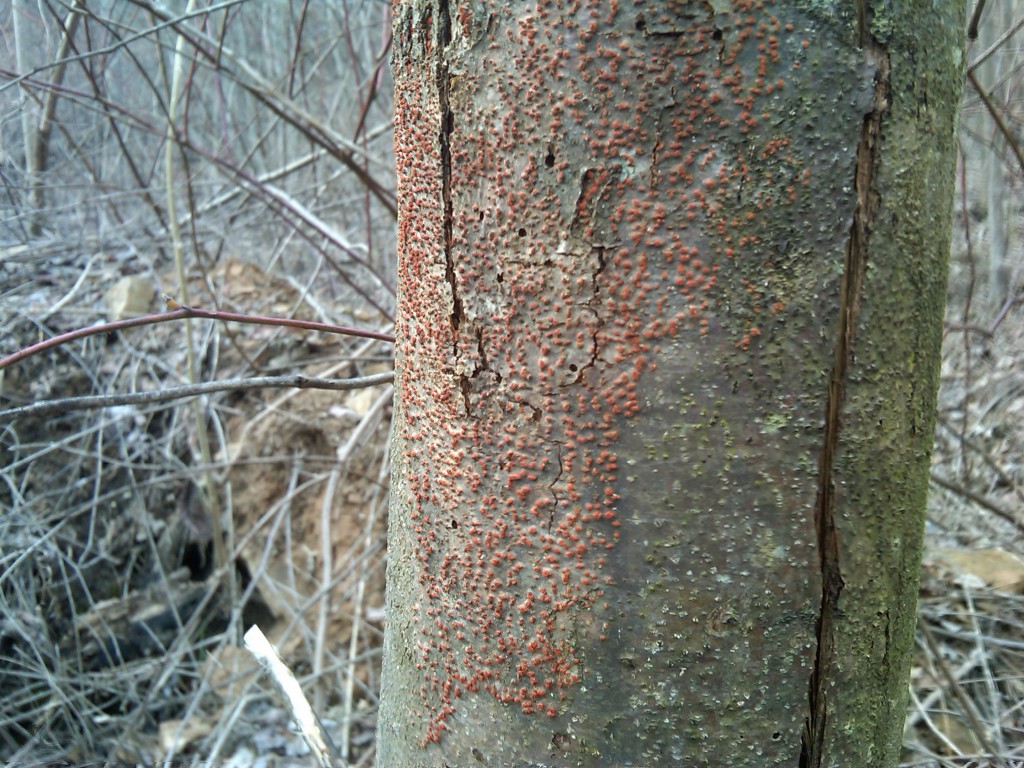
American Forests:
What Choice Will We Make?
2014
Faith Thompson Campbell, Ph.D.
The Nature Conservancy
4245 N Fairfax Dr #100
Arlington, VA 22203
http://www.nature.org/ & www.dontmovefirewood.org
and
Scott E. Schlarbaum, Ph.D.
Department of Forestry, Wildlife & Fisheries
Institute of Agriculture
Knoxville, TN 37996-4563
http://treeimprovement.utk.edu/FadingForets.htm
Trees and forests are essential to the American way of life. They provide shade and shelter, jobs and
products, and clean air and water. From tree-lined neighborhood streets to national parks, Americans
count on trees to provide benefits today and for generations to come. Today many of North America’s
trees and forests are being destroyed by non-native insects and diseases. These invaders are removing
entire species of trees from our forests and neighborhoods threatening air, water, economies, and the
quality of life in our communities.
In the past dozen years, 28 new tree-killing pests have been detected in the country.
pathogen causing oozing through bark--SUDDEN OAK DEATH in California
Over 2-5 years, SUDDEN OAK DEATH kills Oaks
Once introduced, pests impose continuing, often rising, impacts over time. For example, white pine
blister rust, introduced 100 years ago, continues to spread to new geographic areas and new vulnerable
pines. These non-native insects and pathogens can essentially eradicate species from throughout their
ranges. The USDA Forest Service’ Forest Health Enterprise Team’s 2012 report projects mortality across
90% of the basal area of redbay within 15 years.
Some of the species at risk are the foundation of ecologically unique species assemblies, such as the “high-five” pine species in the mountains of the West; hemlock groves in the Appalachians; and tanbark as the only hardwood/hard mast species in the predominantly coniferous forests of northern California.
--------------------------------------------------
https://www.google.com/url?sa=t&rct=j&q=&esrc=s&source=web&cd=5&cad=rja&uact=8&ved=0ahUKEwjD6r6Ok-HTAhVRymMKHXfSDfsQFgg2MAQ&url=https%3A%2F%2Fcontinentalforestdialogue.files.wordpress.com%2F2015%2F03%2Founce_of_prevention_final.pdf&usg=AFQjCNEp_ZoueEJBgR7cKCof4m_cZHvphg
How to Stop Invasive Insects and Diseases
from Devastating U.S. Forests
-------------------------------------
Sassafras tree dying from Laurel Wilt Disease

----------------------------------------------------
http://harvardforest.fas.harvard.edu/publications/pdfs/Foster_Arnoldia_2014.pdf
Hemlock: A Forest Giant on the Edge
David R. Foster, Editor
Eastern hemlock (Tsuga canadensis) is an iconic tree species in northeastern
forests and the Appalachian Mountains. It has faced peril in the past but is now faced with
perhaps its most deadly threat—the invasive and devastating insect pest, hemlock woolly
adelgid. In this new book, Harvard Forest director David Foster and several colleagues and
scientific collaborators explore the history and ecology of and challenges to the majestic
eastern hemlock.
Dead and dying Hemlock via the sucking insect--The Wooly Adelgid
------------------------------------------------------
AMERICAN CHESTNUT BLIGHT
Chestnut decline, attributed to blight, is caused by an Asian bark fungus (Cryphonectria parasitica), which was unknowingly imported from Asia on infected Chinese Chestnut trees. While the Chinese variety adapted and developed a sturdy resistance to the blight, the American chestnut was no match for it.
The disease was first documented in 1904 on trees in the Bronx Zoo. The airborne blight was spread by downward winds. It spread 50 miles a year, and, within a few decades, had killed nearly three billion chestnut trees. It particularly devastated trees in the Appalachian region, where up to 25% of the trees were American Chestnuts. The spread of the blight resulted in billions in crop and lumber losses, as well as a decline in wildlife populations that fed off the nuts.
A Healthy Chestnut tree








No comments:
Post a Comment